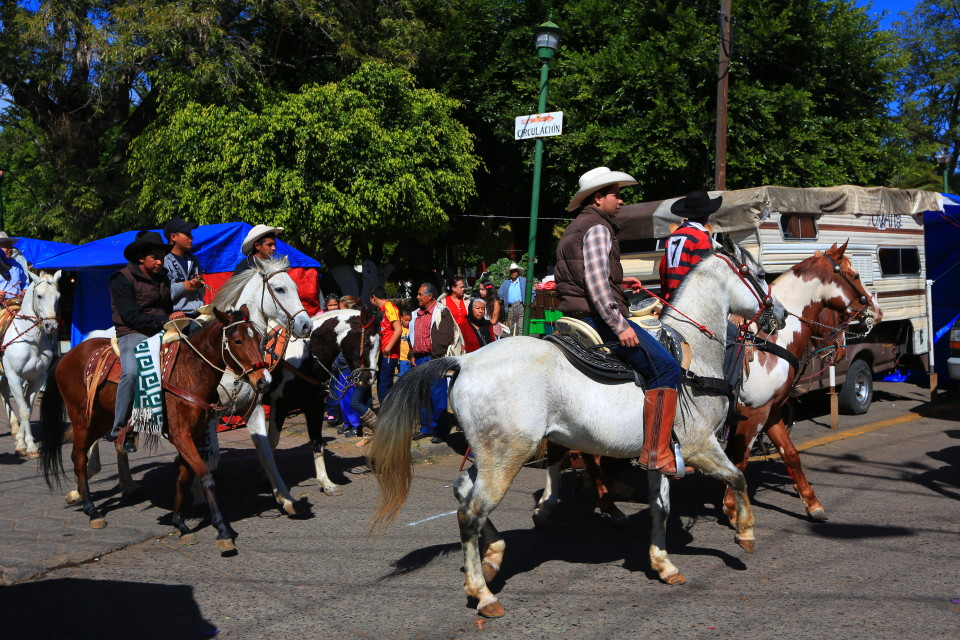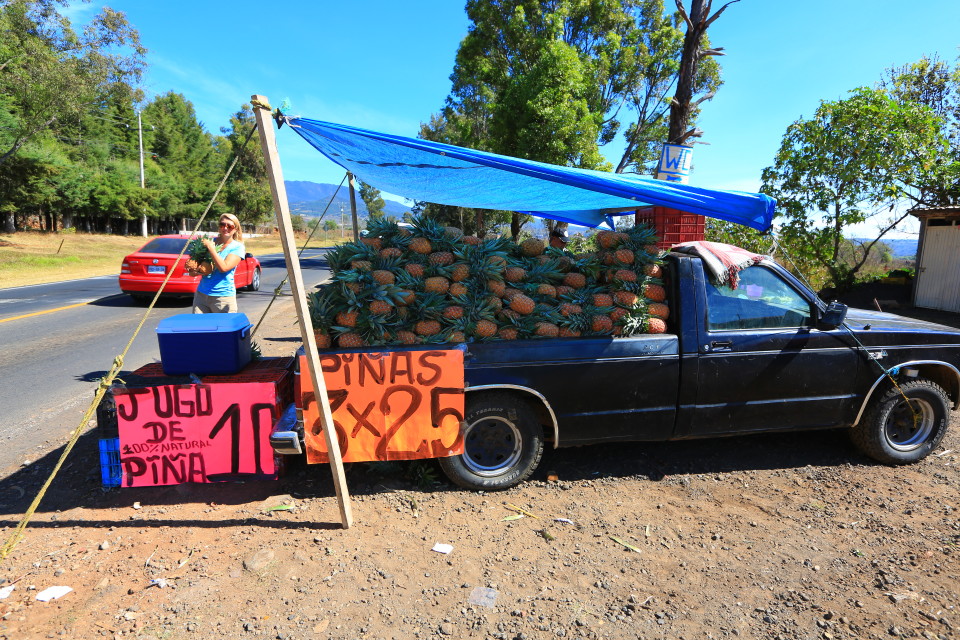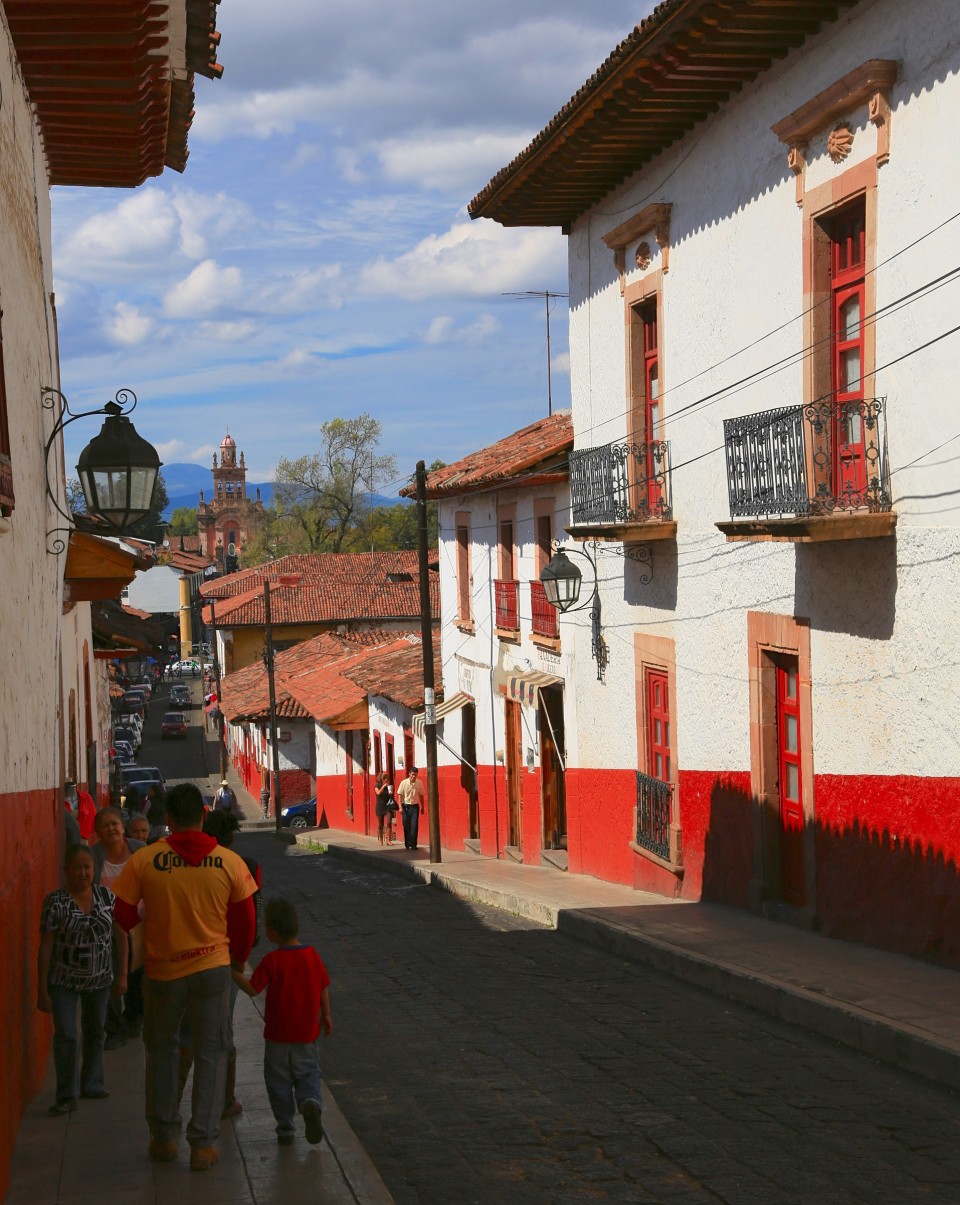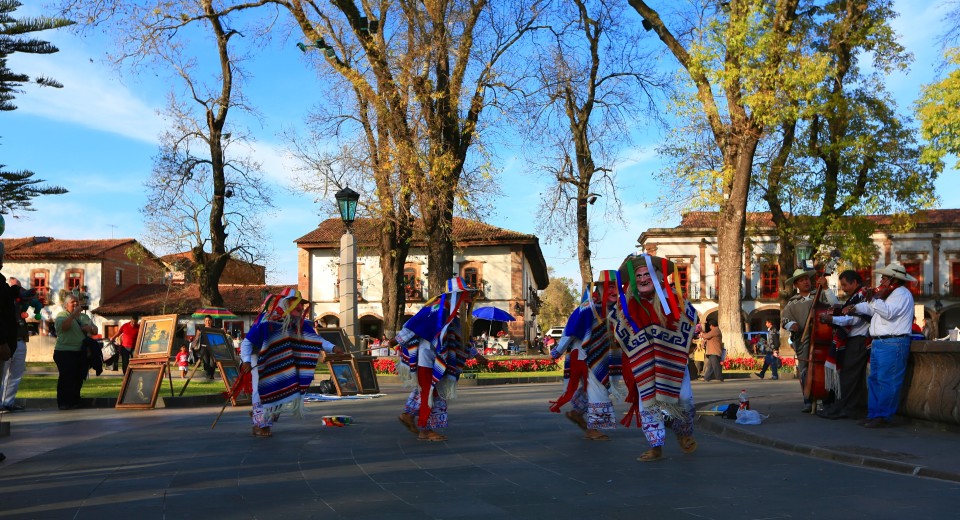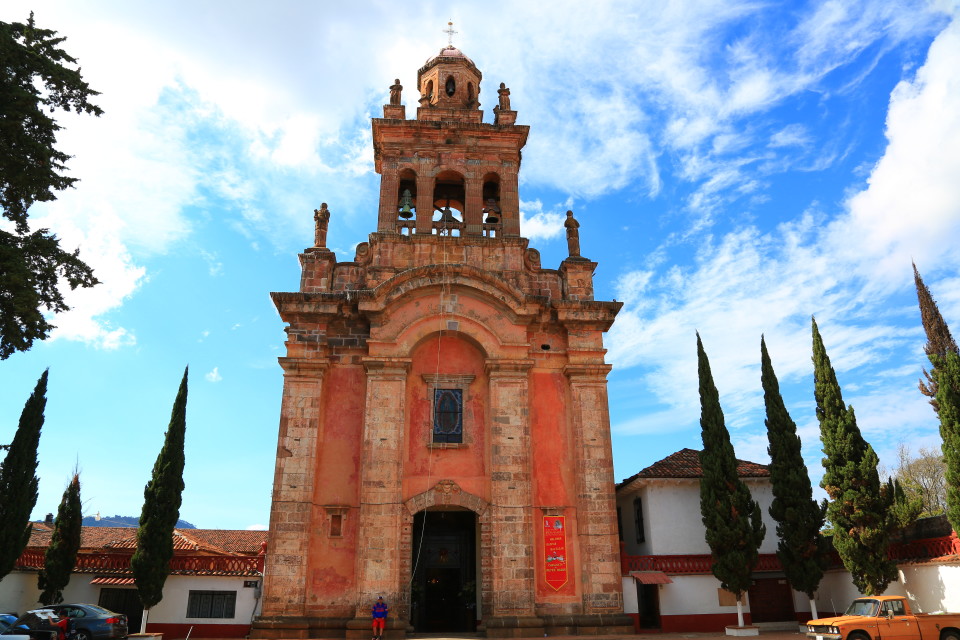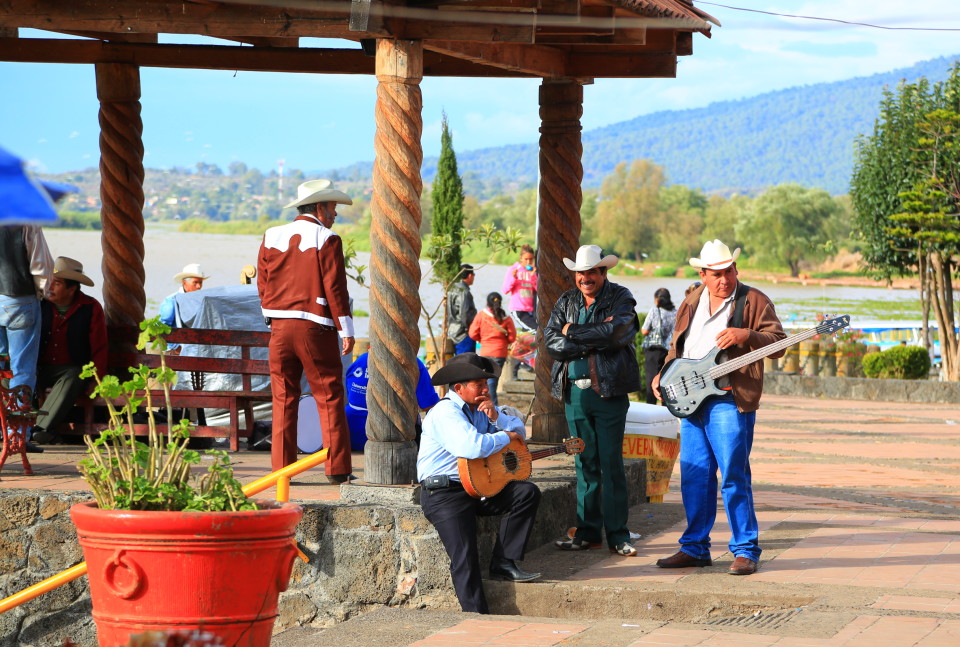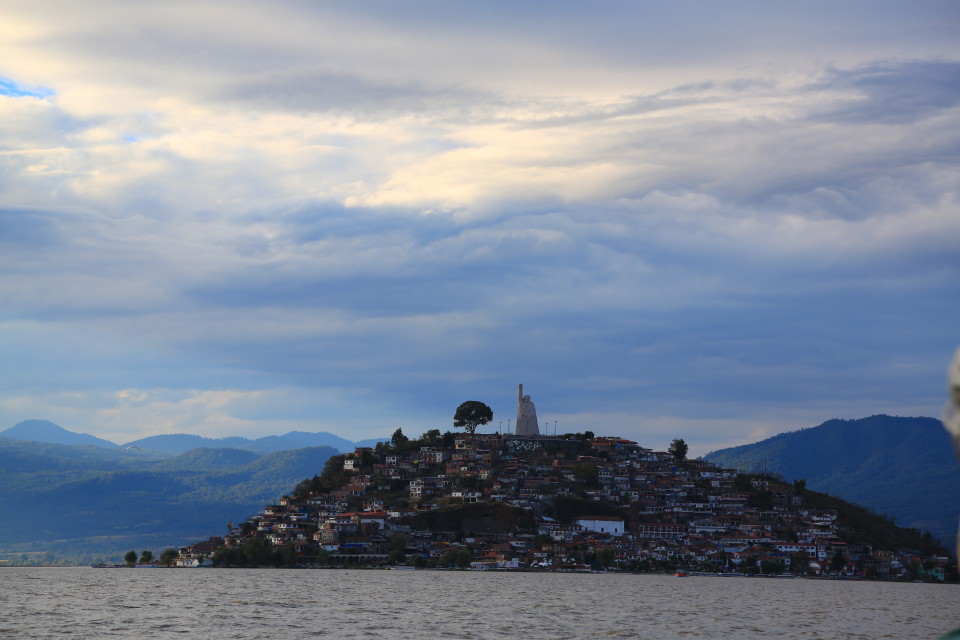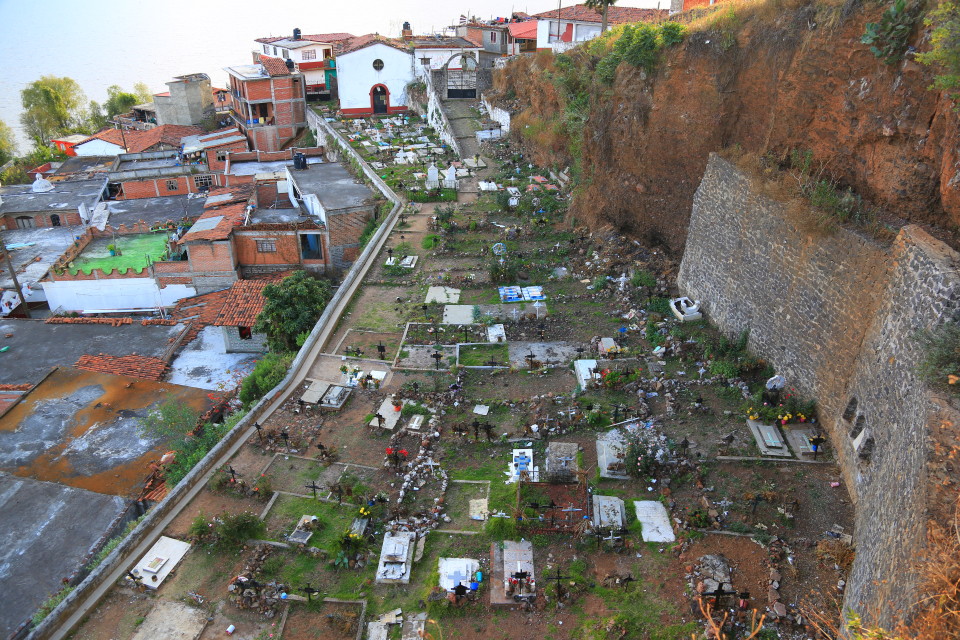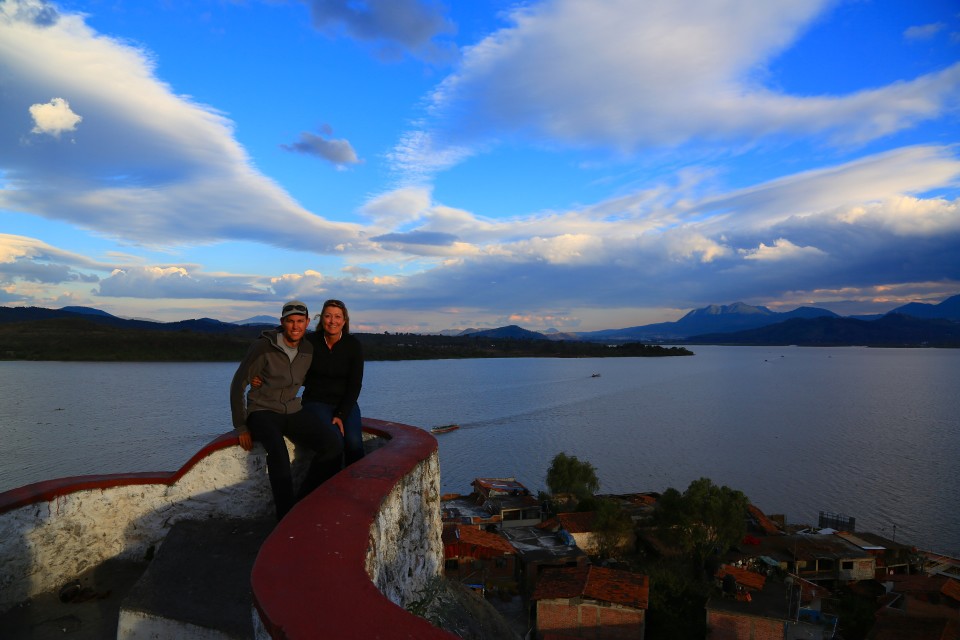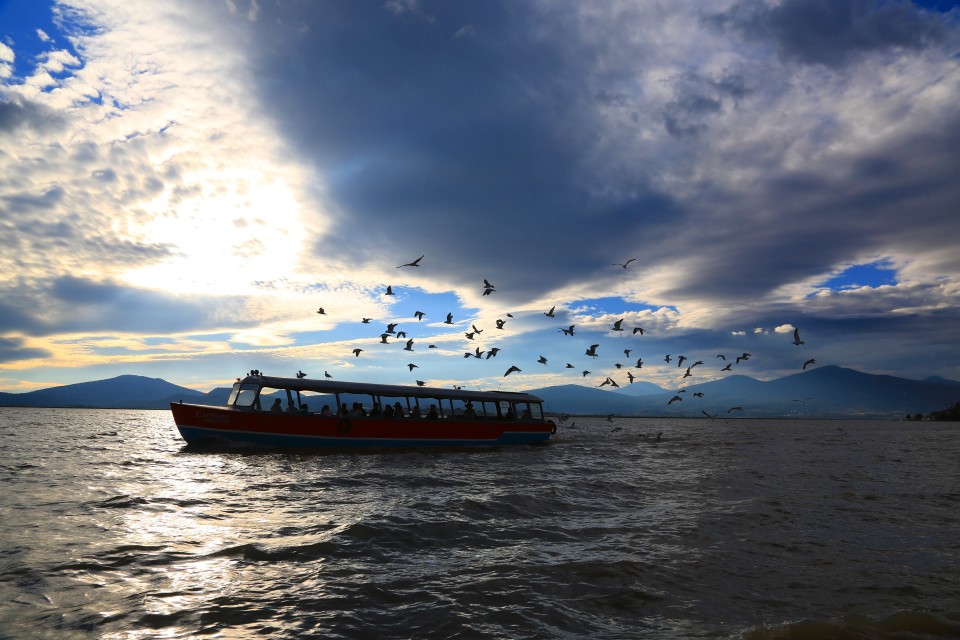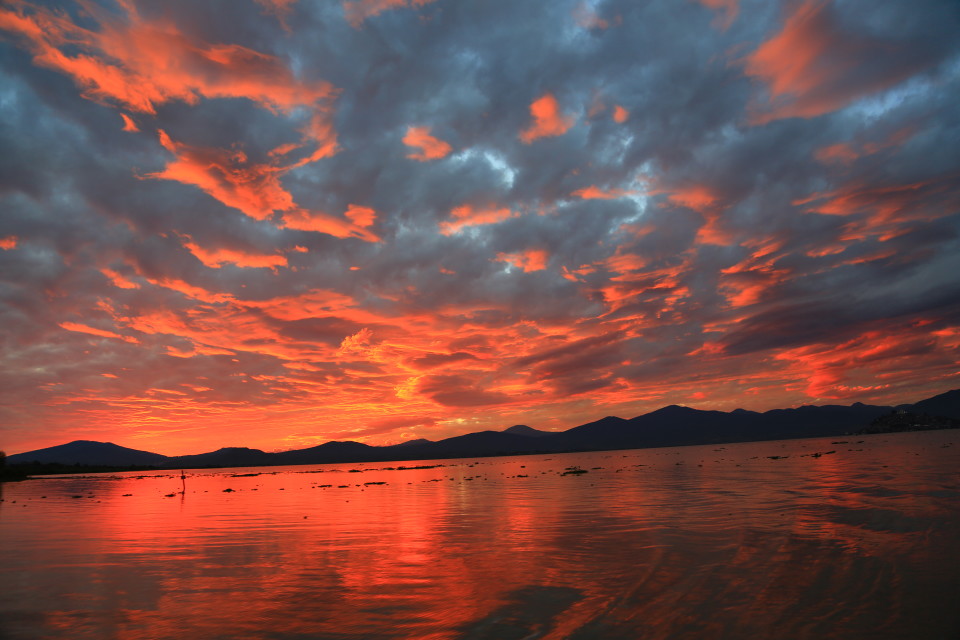Patzcuaro is a small, charming colonial town established in the 1300s perched on a hill over looking a lake with the same name. It rests at 7,200 feet elevation and after spending almost two months on hot beaches, Sam and I had our first cold nights here. It was a nice change for us, but we definitely had to dig out our fleece and down coats.
I read about the history of this area and was taken by the story of Bishop Vasco de Quiroga who came to the area in 1536 after years of brutal, violent treatment of the Tarasco people by the Spanish and Aztecs. Quiroga established village cooperatives that focused on education, agricultural self sufficiency and helped each village establish its own craft specialty. He based his approach on Thomas More’s Utopia. Talk about a man who made a difference.
Sam and I spent a day driving around Lake Patzcuaro visiting all the local indigenous villages, each one still specializing in a different handicraft such as pottery or mask making. This area is known to have some of the best artisans in Mexico, Quiroga would be proud! Our favorite village was Erongaricuaro, which used to be a vacation spot of Frida Kahlo and Diego Rivera. We got into a traffic jam here that was so bad I got out of the car to see what was going on to discover a parade of about 40 men on horseback riding to a rodeo. We were both impressed that that even though these villages were small, they did not feel poor. People looked happy, healthy and there was a rich cultural life.
In my opinion, what made Patzcuaro the city above the lake also fun to visit was how alive it felt. This area of Michoacan has many different indigenous tribes and the town was just bustling everyday, especially around the smaller Plaza Chica where the large daily market overflowed into maze like alleys selling everything from exotic tropical fruit to the small fish caught around the lake.
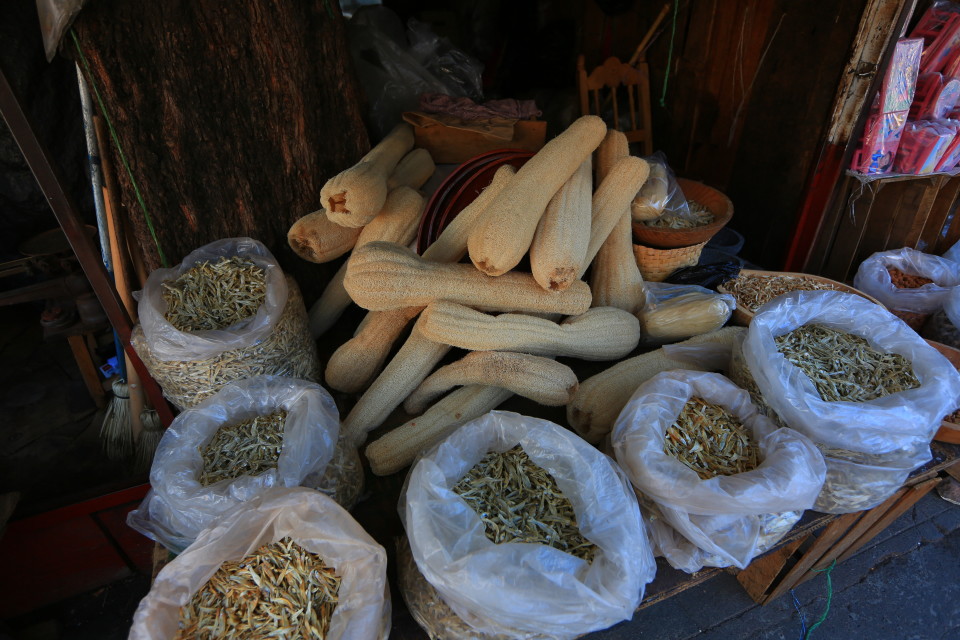
Home grown loofa and the famous small fish that were sold as snacks fried whole and coated in chile. These were a dried version of them.
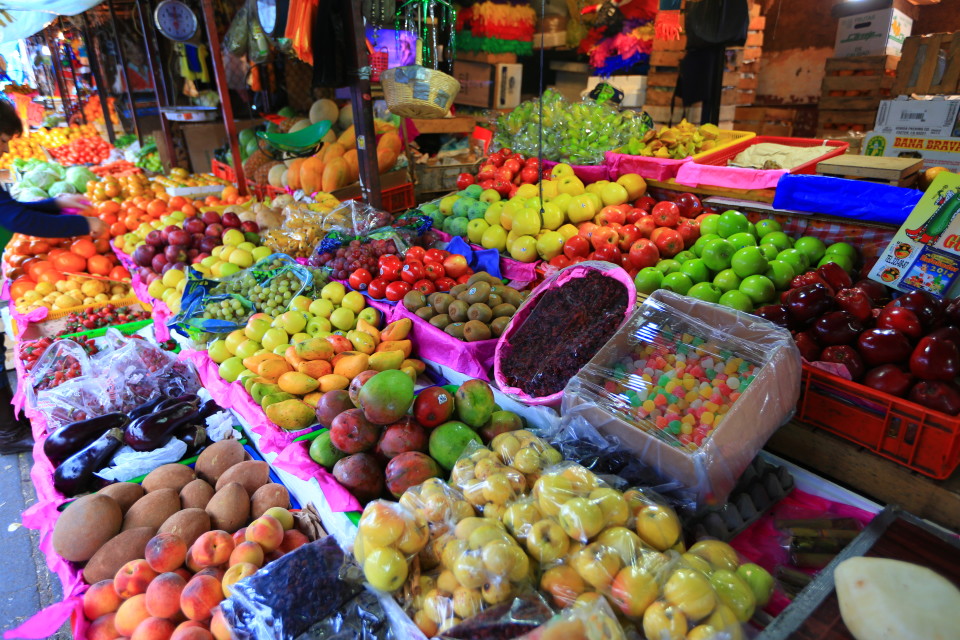
Fruit and vegetable stalls went for blocks. The best produce we have seen so far in Mexico. Those brown fruits in the left corner are mahme. They have a nut like shell with creamy orange flesh with an avocado texture. Really good if hey are not over ripe.
Patzcuaro is a hilly town and easy to explore. In the colonial center all the roofs were a brick red color and the narrow cobblestone streets seemed to always lead you to one of the three plazas, all centered around churches, which seems to be the same for all the towns built by the Spanish in Mexico.
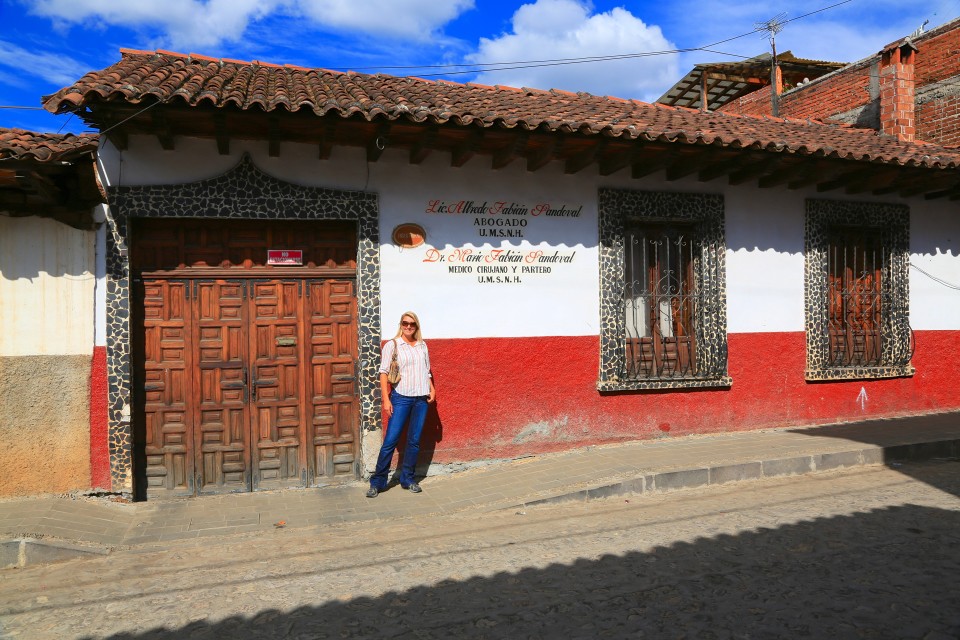
During the day it was really warm, and they it got freezing at night. We loved the stone work on the building.
In Plaza Grande we saw dancers dancing the Danza de Los Viejitos or The Dance of the Little Old Men. This dance is traced to the pre-hispanic era of the indigenous communities of Michoacan.
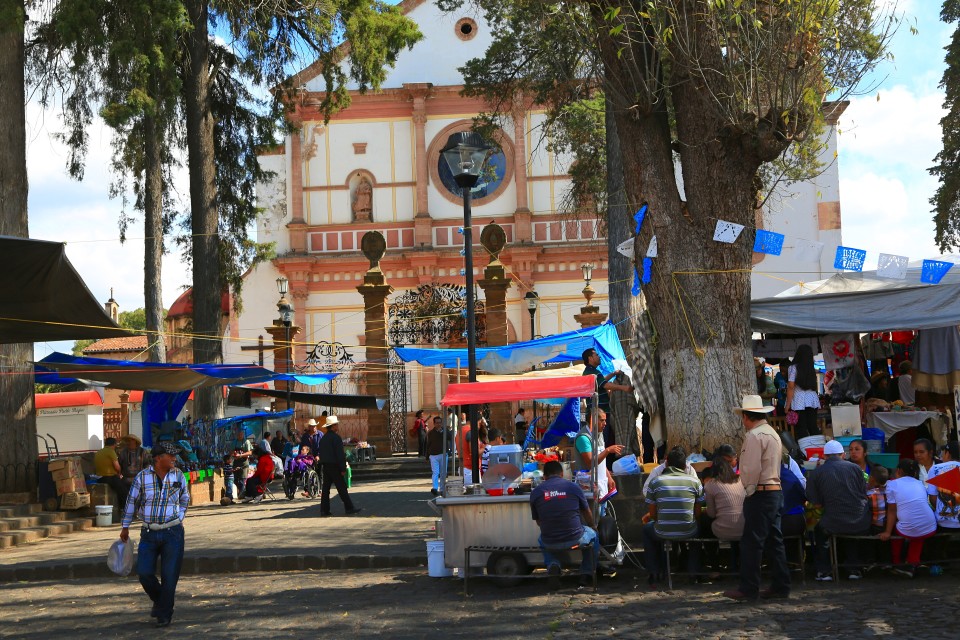
This is not a really pretty picture, but to me it gives a sense of what it is like in Mexico. Food stands surrounding the churches, men in cowboy hats. Organized chaos.
While it was a beautiful city to explore, my favorite part of Patzcuaro was the people. I felt like we saw so many faces that told the story of Mexico. From the Purepecha people where the women had colorfully embroidered skirts, to Mexican farmers with their weathered faces wearing cowboy hats and selling their produce, to my favorite, the musicians, who provide an on going soundtrack throughout our travels in Mexico.
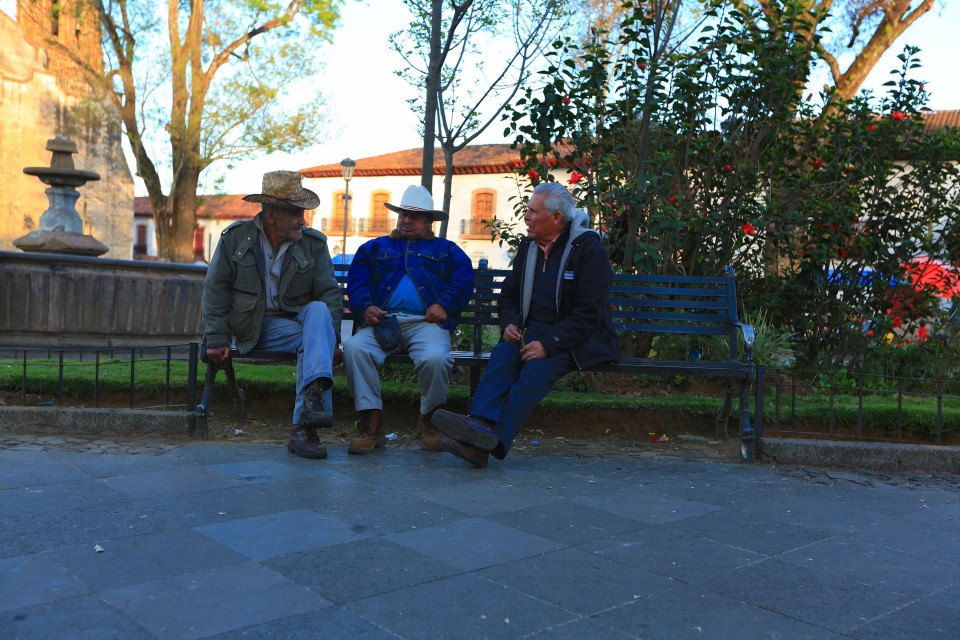
I sat and watched these men talk and laugh for about thirty minutes, they were so great. I love watching the old men in the town squares. It is one of my favorite things about Mexico. Such a social culture, they spent hours here everyday.
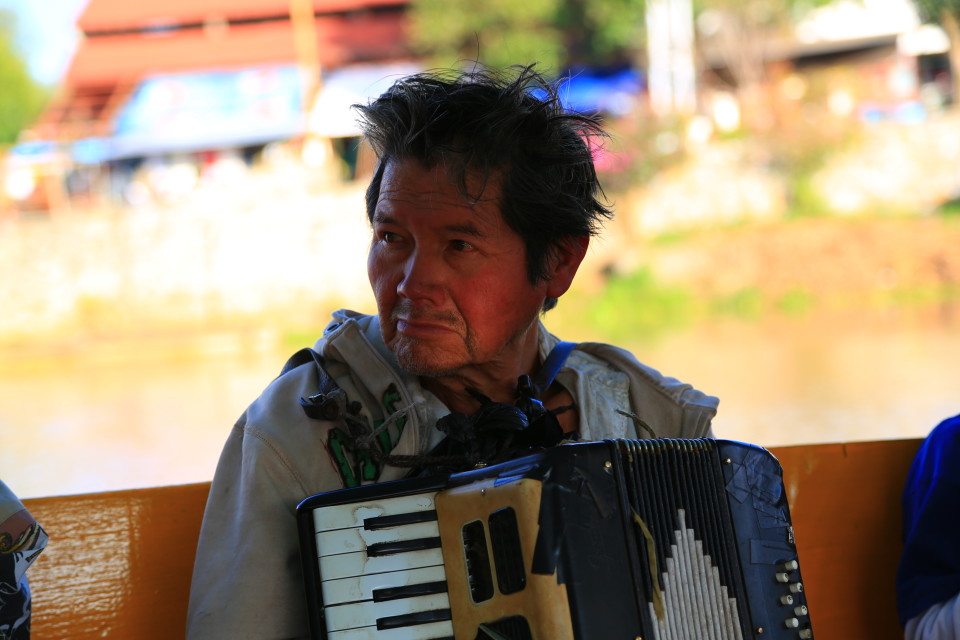
I loved this man. He wore his life on his face. I am sure things are not easy for him, but at least he had his music. He played the accordion on the boat and we were the only ones who gave him a tip, it made me sad.
On our third day here we took a boat to Isla Janitzio, a mostly Purepecha island that is famous for its Day of the Dead celebration in November. People come from all over Mexico to watch the community honor its dead in their small cemetery.














